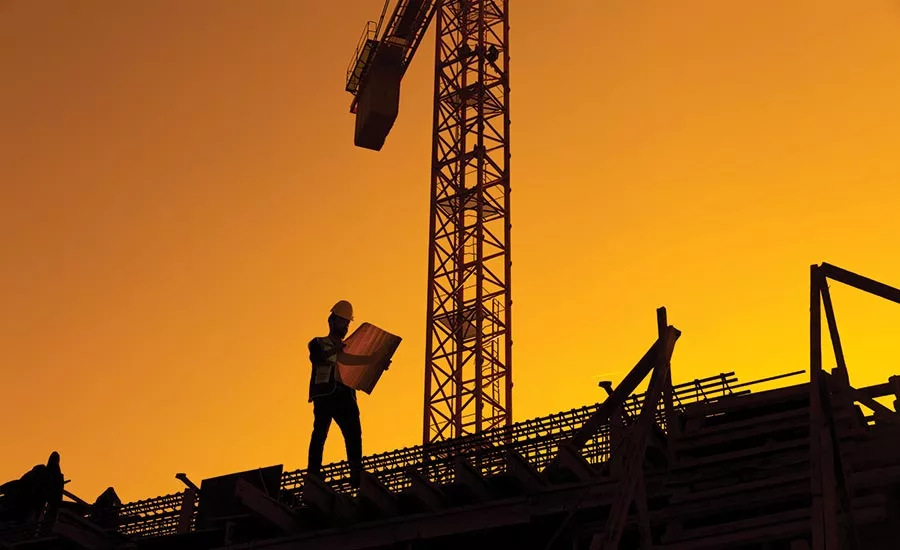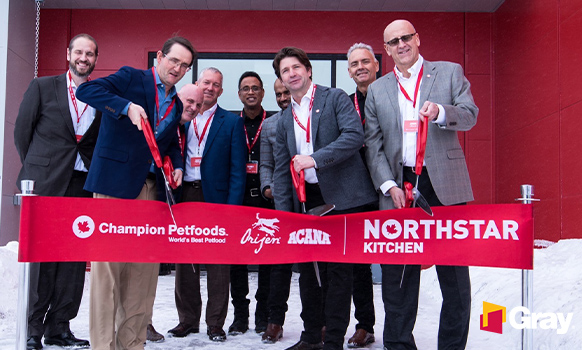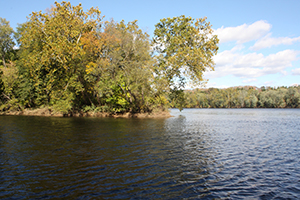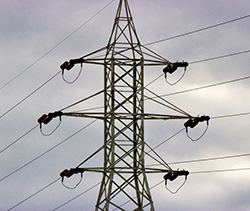2020 Annual Plant Construction Survey: Part 2
The quest for the ideal food manufacturing site
Architectural and engineering design/build firms explain the site-related, key issues facing processors as they plan to renovate or build a new facility

While we’ve looked at the key issues—including COVID-19—facing food processors and A&E/Cs this year in FE’s 2020 Annual Plant Construction Survey, there’s a lot more to discuss. Parts two, three and four cover:
Part 2 (this article): Site related issues beyond wastewater (such as pad-ready sites, weather and flood plains)
Part 3: FSMA facility design criteria, especially in terms of intentional adulteration and food defense
Part 4: Automation trends: Integration and flexibility
The best-laid plans can go awry without expert help
If you’ve ever been shopping for a house, you know that finding an existing house of your dreams will always be a compromise, but even if you decide to build new, select a design, modify it and have your builder construct it, there will always be something you wished you had done differently. It may be site related, materials selected or the “builder’s shortcuts” you didn’t catch—because you couldn’t be on premises every day to inspect the builder’s work.
What’s a builder’s shortcut look like in the finished project? When every window has to be replaced after ten years due to rot—because the builder’s crew “forgot” proper sealing and caulking techniques—and the windows were cheap “builders’ special” units. This experience actually happened to a friend of mine’s new house, and he visited the site just about every day during construction.
Your wish list for choosing a site to renovate or build a new food plant is no different than building a new home, just much more complex. While you can shop for a community where taxes are low, if you’re planning a construction project, you’d like a little extra help—and maybe even a site that’s ready to go.
“In choosing a new site, the list of critical issues continues to be entitlements (zoning, incentives), availability of utilities to the site at no or low cost, the impact of the location on transportation, utility and labor costs, and constructability issues (not in a flood plain or wet land, good soils, able to deal with storm water),” says Darrin McCormies, Epstein senior vice president, director of industrial services.
"The real estate transaction process typically takes longer than anticipated or longer than the schedule allows,” adds McCormies. A site that is “pad ready” with site data readily available (current survey, topographic study, utility capacities, etc.) takes some of the uncertainty out of the timing and shortens the time for technical due diligence, making the site more attractive to potential buyers.
With new plant construction accelerating over the past few years, it has led to shortages of attractive, ready-to-go sites (e.g. cleared, rough graded, all utility and road infrastructure to the boundary), says Tamara Zupancic, director of marketing for The Austin Company. States and communities that have ready sites are in a better position to win new projects. Many state and regional economic development agencies—such as Tennessee, Ohio and South Carolina—have significantly invested in site readiness and grant programs to prepare more industrial sites, along with railroads (e.g. CSX and CN) and utility companies (e.g. TVA and Duke Energy). Most food companies don’t have a desire to fund major infrastructure, nor the time or risk tolerance to wait. In addition to site and infrastructure improvements, many of these programs require utility documentation, surveys, and a lot of the front-end, environmental due diligence to be completed.
 |
With a long-term partnership of nearly a decade, Gray and Champion Petfoods celebrated the grand opening of a new 426,000-sq.-ft. facility in Acheson, Alberta, Canada on January 24, 2020. Gray worked with Champion on site details through inception, design, construction and commissioning. Photo courtesy of Gray. |
Due diligence, especially in zoning and flood plains
A&E/Cs warn, however, it’s all about due diligence in making a selection. “Upfront due diligence in site selection is critical when identifying the challenges posed by a prospective site,” says Courtney Dunbar, Global Facilities Group, Burns & McDonnell. Each owner or developer has its own proprietary list of criteria that is based on specific business needs and objectives. While site selection can often be a complex journey, assembling a list of factors that should be evaluated both quantitatively and qualitatively is imperative in this process. During this review, potential hurdles will begin to emerge. It is important to identify these challenges early in the planning process so construction can proceed seamlessly, and unanticipated costs can be mitigated.
Due diligence in site selection commonly begins with location and proximity to transportation and utilities, says Dunbar. Closer proximity to transportation options can yield significant operational cost savings. Energy costs play a large factor in certain regions of the country, as does accessibility to power interconnections. If an owner or developer is sourcing raw materials and feedstock, road and rail infrastructure conditions are also important variables to consider.
“Every client and project are quite different,” says Tammi McAllister, CRB associate, core team leader. Some may have areas of the site that are in a flood plain, but that is only when the site is rather large. “When sites are selected in an area with a potential for tornadoes, we are seeing more tornado shelters within the building and in some cases we have installed external units,” says McAllister.
Permitting and zoning, as well as environmental impact, cultural and historical site assessments, should all be conducted early in the site selection process, adds Dunbar. Sites located on flood plains or near wetlands are likely to require additional permitting and/or remediation before construction begins. Finally, owners must conduct geophysical studies of soil and subsurface conditions, available labor resources and projected tax liabilities. “We strongly recommend creating an attribute matrix that enables owners and developers to efficiently compare sites with a set of standardized criteria to pave the way for easy weighing of important factors. This visual side-by-side comparison can often be translated into a scoring system that yields the optimal site,” says Dunbar.
 |
How close will you build to the flood plain? Small Island in the Delaware River. Photo: Wayne Labs |
Sometimes, a processor may have no choice but to build on a flood plain as McAllister described. For example, Chris Jarc, P.E., PMP, LEED AP, Hixson Architecture & Engineering vice president, business development - food and beverage market, describes a client in North Carolina, whose operation is located on land that is partly in a flood plain. “He wanted to build on that site vs. buying additional land somewhere else. It was cheaper for his operation to have everything located on one site. The flood plain is along a small tributary of a larger river so it is not like building along an ocean or larger body of water. It caused some design issues (i.e., raise the foundations up another four feet) that cost the client more money but it was still cheaper than buying additional land and building farther away from the rest of his operation.
“We seemed to have run into this situation a couple of times over the past few years where the client had to weigh the advantage of building in a flood plain or building elsewhere,” adds Jarc. “Each situation is different; for example, we had a client locally that decided it was better to build elsewhere than building an addition on an existing facility in a flood plain.”
Planning for the shakes
Obviously, not all areas are prone to earthquakes. But, even in Southeastern Pennsylvania, which is not known for earthquakes, I experienced the wave-like rolling motion of a 5.8 magnitude earthquake a few hundred miles away in central Virgina some years ago. Now I know what many Californians experience on a more frequent basis.
There is nothing like the personal experience or an A&E/C firm’s experience with an earthquake to stress how important designing for fault zones is. Forrest McNabb, executive vice president of Big-D Construction, notes: “A couple of our business units have been impacted by significant earthquakes recently in Utah and Idaho. The big concern that surfaced was the impacts to production equipment and the support systems to the utility infrastructure in operational facilities.
“The ability to respond immediately to provide assessment and repairs, if required, to minimize downtime is paramount to keep production personnel safe and production moving forward without impacting the food supply chain.” The aftershocks are also a critical concern in the post-earthquake response as the Number-One priority is to assure all personnel, operational and assessment teams are safe and out of harm’s way while executing the “Safe Off” of any concerning systems or structures, says McNabb.
As a contractor, the biggest eye-opening issue was dealing with projects in the construction phase, adds McNabb. “The wall and roof systems we utilize in the industry are designed for permanent construction and some systems to allow for temporary shoring and bracing. The impacts of an earthquake can wreak havoc on these temporary systems on facilities under construction where they cannot withstand the impacts of an earthquake. As a company, we will be looking at these temporary systems closer as we move forward along with our partners in the industry. The top priority, as always, will be to assure the safety of the workers during these events to the best of our ability.”
Utilities and people
 “When it comes to available utilities, we ensure the utility company can provide the needed capacity, but there is little back up from that perspective,” says McAllister. For electrical systems, back-up generators are recommended to maintain operation of the parts of the process that are critical, i.e. freezers, coolers, etc.
“When it comes to available utilities, we ensure the utility company can provide the needed capacity, but there is little back up from that perspective,” says McAllister. For electrical systems, back-up generators are recommended to maintain operation of the parts of the process that are critical, i.e. freezers, coolers, etc.
Choosing a location has a lot of requirements. Typically, clients are looking to cities that are willing to help them from a tax perspective, but also ensuring that utilities are available at the site, property is close to a major highway—and possibly rail—and a labor force is available and supported by local talent from trade schools and universities, says McAllister.
“Utility availability is a big consideration,” says Mark Galbraith, co-owner of GALBRAITH Pre-Design. Is there adequate water volume and pressure for the process? Same consideration for fire suppression; or is a water tank and fire pump necessary? Is adequate natural gas service available? If not, is it cost effective to get it to the site?
There’s been an increase in waste water pre-treatment onsite, due to municipal treatment plants having stricter limitations about the condition of wastewater which they’ll accept, adds Galbraith. For an extended discussion on this topic, see FE’s 2020 Annual Plant Construction Survey.
How important is labor? Lloyd Snyder, senior VP at Woodard & Curran: “The labor shortages we are seeing across the country are making the war for talent a real critical deciding factor in locating new facilities.”
“When clients are looking for new sites to replace an existing facility, their first concerns are typically to retain employees, therefore, commute times are a primary consideration,” says Jack Michler, regional manager, ESI Group USA. When the facility is a new plant, then proximity to an available workforce and public services is critical. Other considerations include proximity to raw materials (e.g. raw milk for dairy plants, slaughter facilities for meat processors) and logistic concerns such as proximity to highway corridors, 3PL (third-party logistics) businesses when used and rail services for large and bulk processors.
—
The following companies and individuals participated in the 2020 Food Engineering Plant Construction Survey:
|
A M King |
ADF Engineering, Inc. |
|
Alberici Constructors |
ARCO National Construction |
|
Big-D Construction |
Black & Veatch |
|
Burns & McDonnell |
CMC Design-Build Inc. |
|
CRB |
Dennis Group |
|
EA Bonelli + Associates |
Epstein |
|
ESI Group USA |
Faithful+Gould |
|
Food Plant Engineering, LLC |
GALBRAITH Pre-Design, Inc. |
|
Gleeson Constructors & Engineers LLC. |
Gray |
|
Hixson Architecture & Engineering |
Mead & Hunt |
|
Shambaugh & Son, L.P. |
SSOE Group |
|
Stellar |
The Austin Company |
|
The Haskell Company |
Tom Wiersma, Independent Consultant |
|
Tippmann Group |
Woodard & Curran |
Looking for a reprint of this article?
From high-res PDFs to custom plaques, order your copy today!








